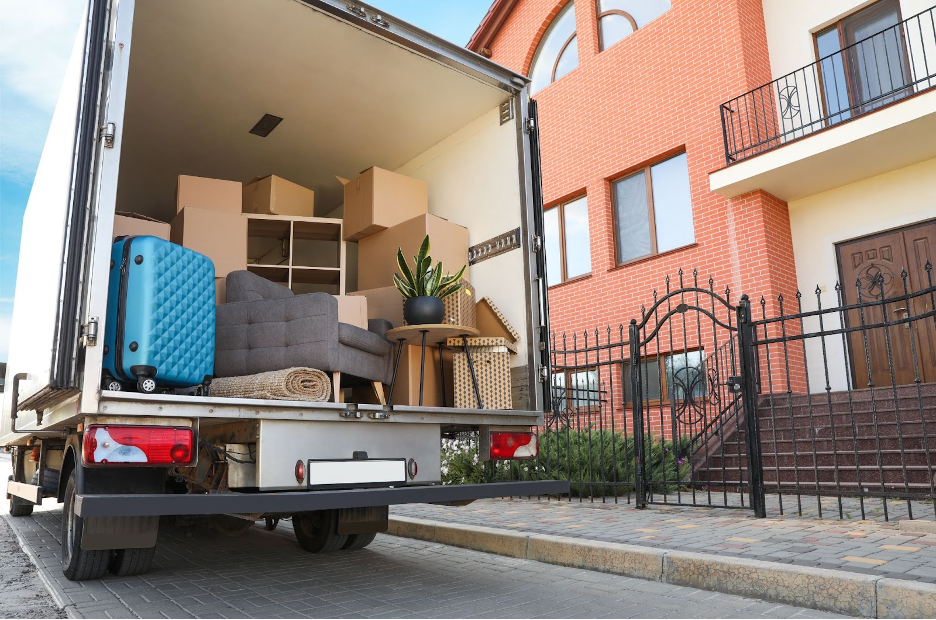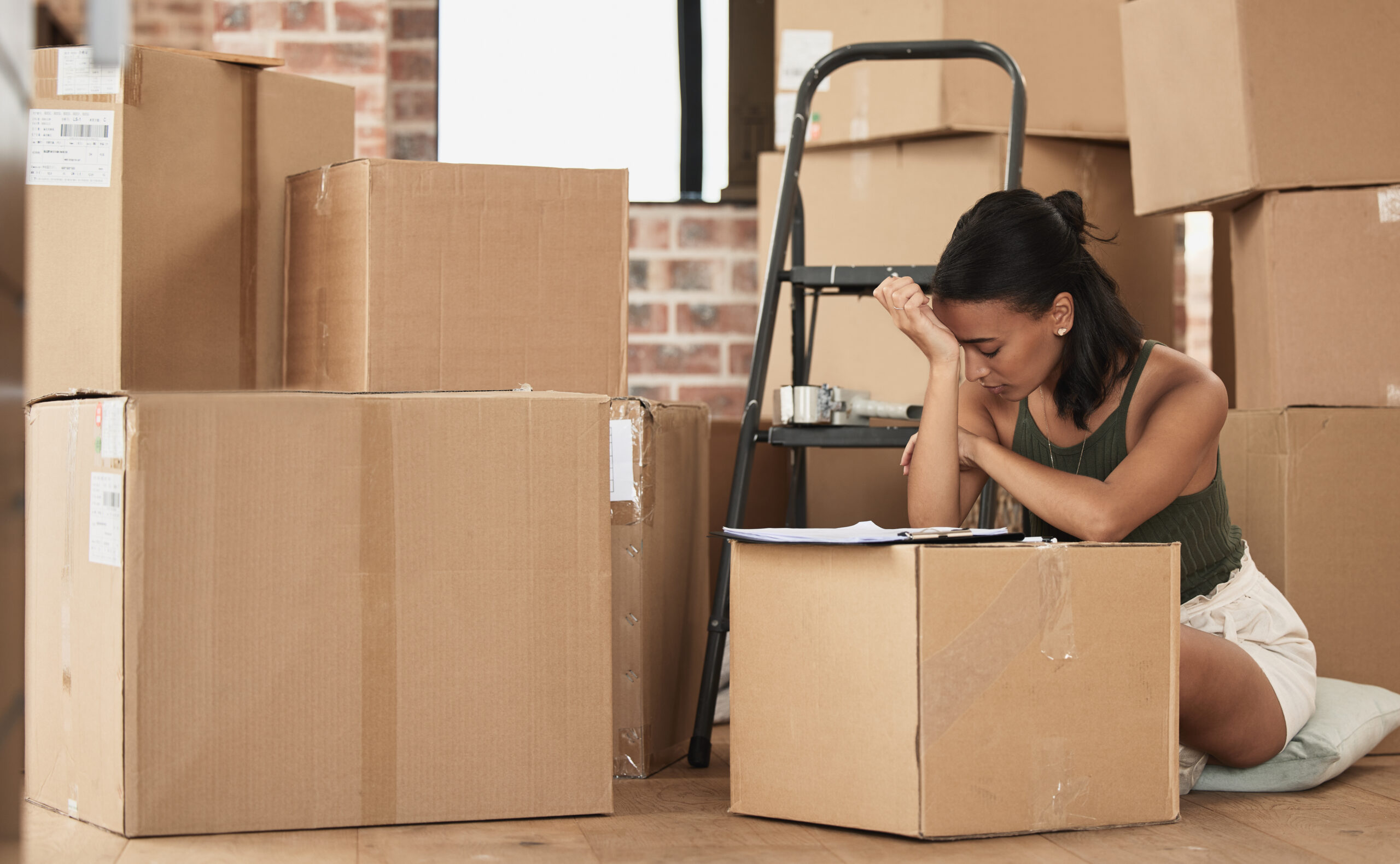- Moving Guides
- 5 Min Read
Your Complete Guide to Moving from House to Apartment
-
Share

Moving from a house to an apartment represents a significant lifestyle change that goes beyond simply changing addresses. Whether you’re empty nesters looking to simplify, professionals relocating for work, or anyone seeking a more manageable living situation, this transition requires careful planning and a shift in mindset.
At BMS Moving & Storage, we’ve helped countless families navigate this downsizing journey, and we’re here to guide you through every step.
Understanding the Why Behind Your Move
Before diving into logistics, it’s worth examining your motivations. People move from houses to apartments for various reasons: reducing maintenance responsibilities, cutting costs, relocating to urban areas, or simplifying life after children leave home. Understanding your “why” helps inform decisions about what to keep, where to move, and how to approach this transition emotionally.
This move often represents more than just a change in square footage. It’s also a lifestyle shift that can bring unexpected freedom. No more weekend lawn care, no more worrying about roof repairs, and often, a prime location closer to restaurants, entertainment, and work.
The Downsizing Challenge: What Stays and What Goes
The biggest hurdle when moving from house to apartment is usually space. That 2,500-square-foot house won’t fit into a 900-square-foot apartment, and trying to make it work will only create chaos.
Starting the Decluttering Process
Begin the packing process at least two months before your move. Go room by room and categorize items into four groups:
- Keep: Essential items and things you truly love
- Donate: Items in good condition that others could use
- Sell: Valuable items that could offset moving costs
- Discard: Broken or worn items with no value
Be ruthless but thoughtful.
That dining set for twelve might have sentimental value, but if your new apartment’s dining area fits six at most, it’s time to let go. Consider photographing sentimental items before parting with them. Sometimes, the memory is what matters most.
Room-by-Room Decisions
- Living Areas: Your sectional sofa might need to become a loveseat. Measure your new space carefully and choose furniture that serves multiple purposes. Ottoman storage, expandable dining tables, and wall-mounted TVs maximize limited square footage.
- Kitchen: Apartments typically have smaller kitchens with less storage. Keep versatile cookware and donate duplicate gadgets. That bread maker gathering dust? Someone else will love it. Focus on items you use weekly, not occasionally.
- Bedrooms: Platform beds with built-in storage replace bulky dressers. Consider vacuum-sealed bags for seasonal clothing storage. Guest room furniture usually has to go – but remember, that’s what hotels are for.
- Garage and Basement: This is often the hardest adjustment. Without these storage areas, you’ll need to be strategic. Seasonal decorations might need paring down, and that collection of camping gear you haven’t used in five years probably needs a new home.
Finding the Right Apartment
Not all apartments are created equal, especially when you’re accustomed to house living. Look for features that ease the transition:
Space Considerations
- Storage: Seek units with ample closets, in-unit storage, or available storage lockers
- Layout: Open floor plans feel more spacious and house-like
- Outdoor space: Balconies or patios provide crucial outdoor access
- Parking: Ensure adequate parking for your vehicles and guests
Amenities That Matter
Many apartment complexes offer amenities that replace what you’re giving up. A fitness center means no home gym needed. A pool maintains that backyard luxury. Some even offer workshop spaces or gardens for hobbyists.
Consider location carefully. Being walking distance from shops and restaurants can compensate for a smaller kitchen. Proximity to parks provides the green space you’re leaving behind.
Making Your Apartment Feel Like Home
The key to successful apartment living after house life is maximizing your space while maintaining comfort and style.
Vertical Storage Solutions
When floor space shrinks, think upward:
- Floor-to-ceiling bookcases
- Wall-mounted desks and tables
- Hanging organizers in closets
- Over-door storage systems
Multi-Functional Furniture
Invest in pieces that work overtime:
- Coffee tables with storage compartments
- Dining tables that double as desks
- Sofa beds for guests
- Nesting tables that tuck away when not needed
Creating Zones
In smaller spaces, defining areas helps maintain the room-by-room feel of a house. Use rugs to delineate spaces, position furniture to create natural divisions, and use lighting to establish different moods for different areas.
Managing the Emotional Transition
Moving from house to apartment can trigger unexpected emotions. You might mourn the loss of space, privacy, or the dreams tied to your house. This is normal and valid.
Focus on what you’re gaining rather than losing. Less maintenance means more free time. Lower costs might mean more travel. A doorman provides security. The gym downstairs saves commute time. Urban living offers cultural opportunities and convenience that suburban life couldn’t match.
Give yourself time to adjust. It typically takes three to six months to feel truly settled in a new living situation. Be patient with yourself as you adapt to apartment rhythms – neighbors above and below, shared walls, and new routines.
Practical Moving Day Considerations
Apartment Building Logistics
Moving into an apartment complex requires extra coordination:
- Reserve elevators: Book freight elevators well in advance
- Check restrictions: Many buildings limit moving hours
- Protect common areas: Buildings may require floor and wall protection
- Review parking: Ensure your moving truck has designated space
Professional Movers vs. DIY
While you might have managed house moves yourself, apartment moves often benefit from professional help. Navigating narrow hallways, multiple flights of stairs, or elevator restrictions requires experience.

Storage Solutions For When You Can’t Part With Everything
Sometimes you’re not ready to let go of everything immediately. BMS Moving & Storage offers climate-controlled storage units perfect for:
- Seasonal items (holiday decorations, sports equipment)
- Furniture you might use in a future, larger space
- Sentimental items you need time to sort through
- Business inventory or files
Consider a storage unit a transitional tool, not a permanent solution. Set a timeline for revisiting stored items. If you haven’t needed something in a year, you probably don’t need it at all.
Meet Your Moving Partner
At BMS Moving & Storage, we understand that moving from house to apartment represents a significant life transition. Our experienced teams specialize in downsizing moves, offering:
- Packing services that maximize space efficiency
- Careful handling of cherished items
- Storage solutions for items you’re not ready to release
- Coordination with apartment building management
- Disposal and donation services for items you’re leaving behind
We’ve helped thousands of families make this transition smoothly, treating each move with the care and attention it deserves. The key is approaching this move with the right mindset, proper planning, and professional support.
Contact BMS Moving & Storage today. Let’s turn your downsizing journey into an exciting new adventure.



